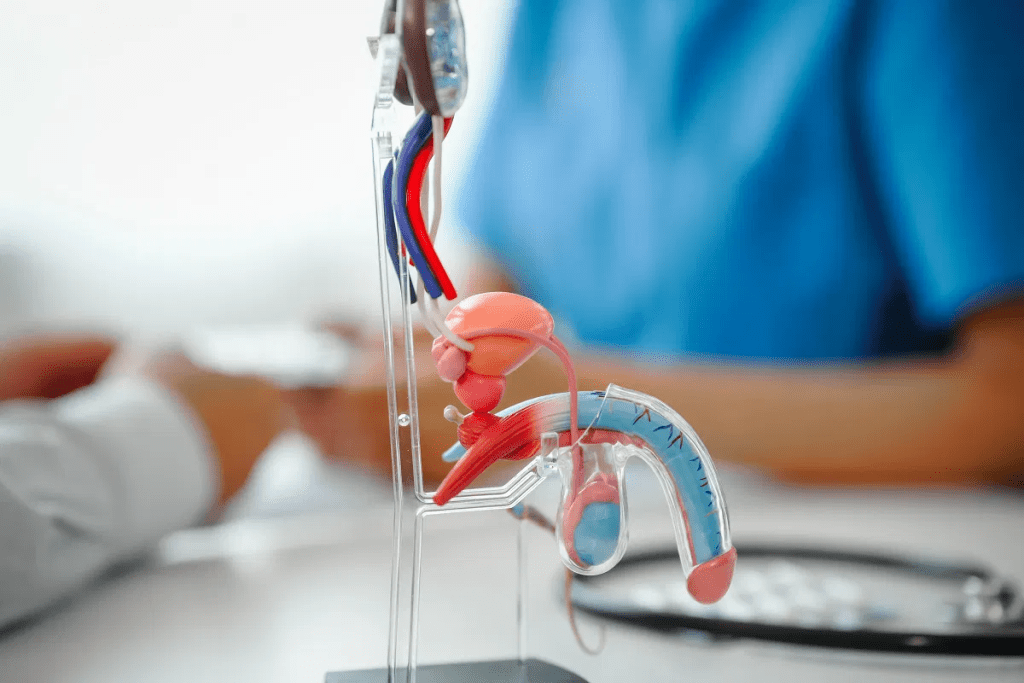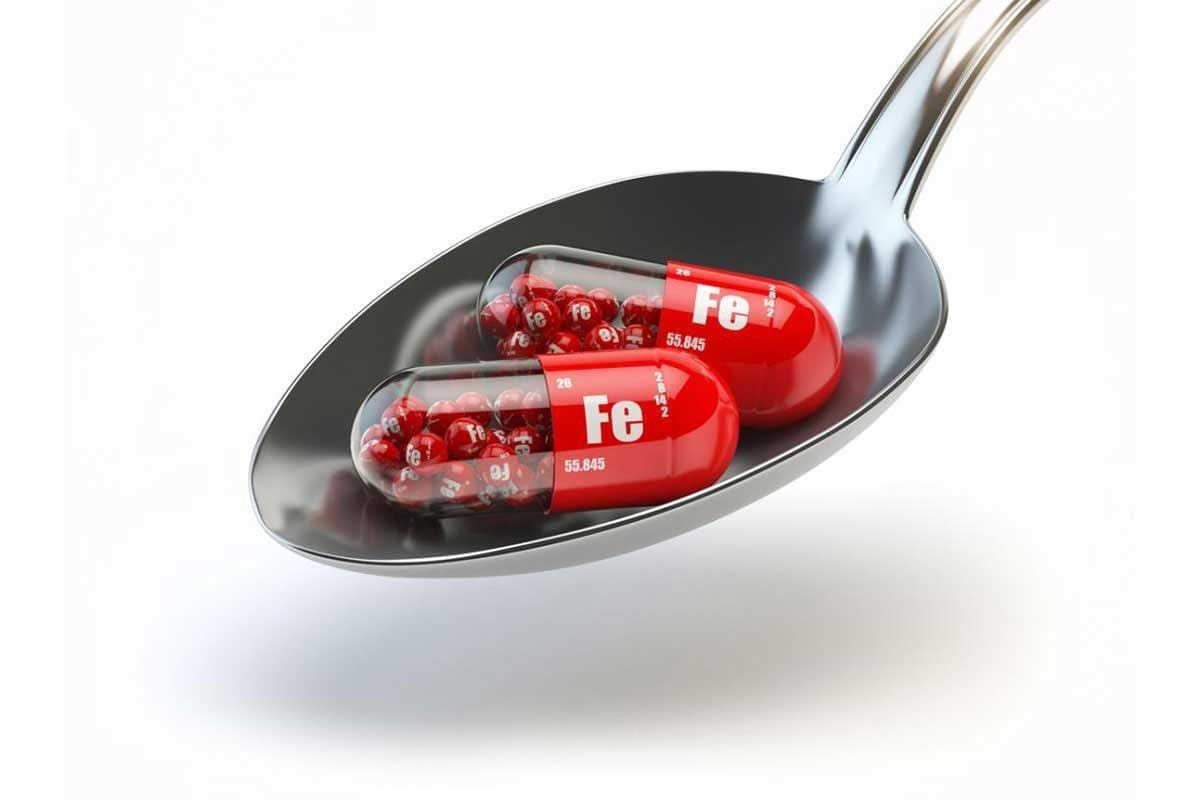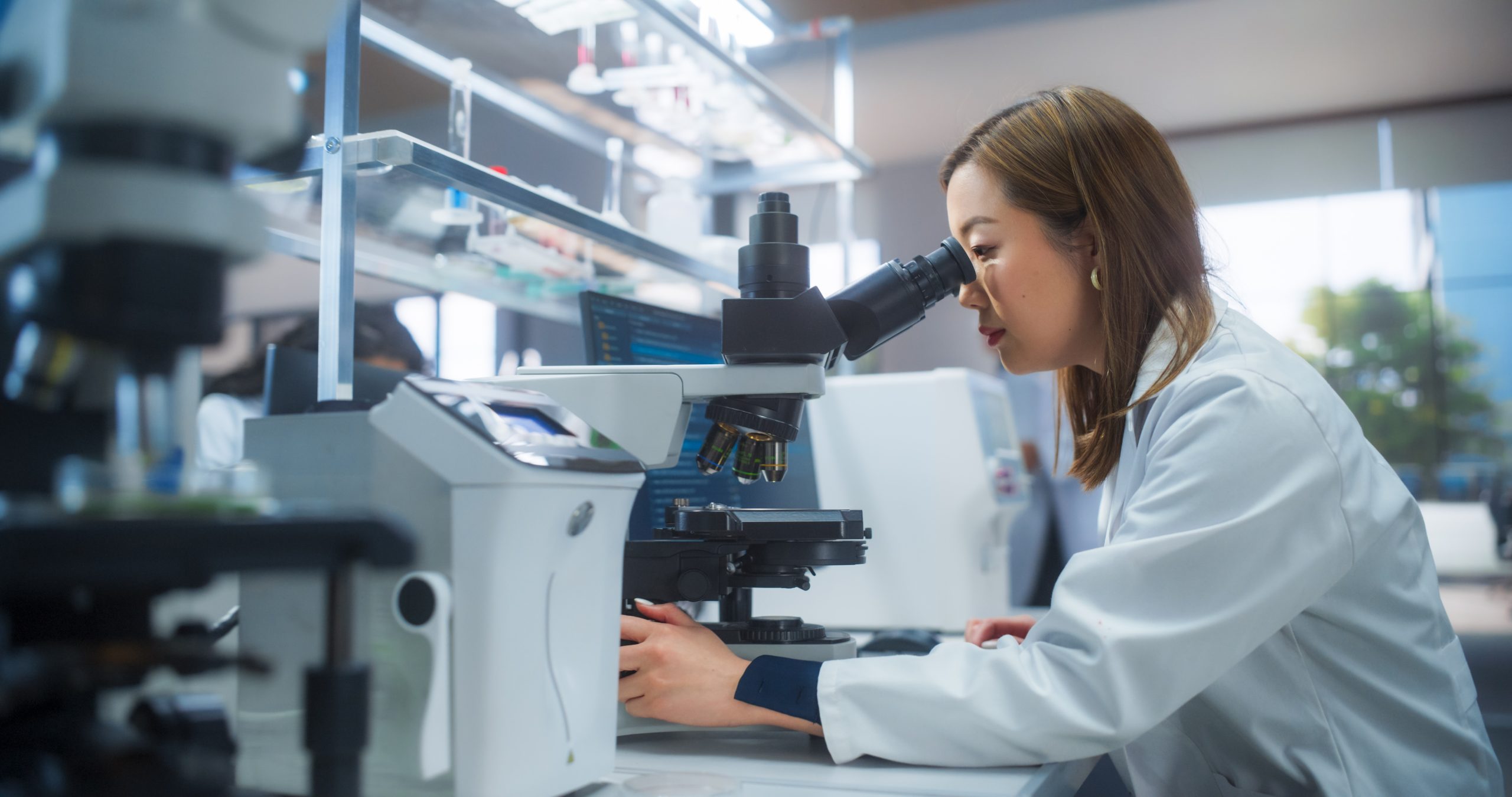Last Updated on November 26, 2025 by Bilal Hasdemir

Getting a prostate cancer diagnosis can feel scary. But knowing what causes it can help men take care of their health.
At Medicus Pharma Ltd., we focus on fighting prostate cancer. We think it’s key to know the main cause of this disease.
Key Takeaways
- Prostate cancer is a big health issue for men worldwide.
- Knowing the causes and risk factors is key for prevention and early detection.
- Research is ongoing to find effective treatments for prostate cancer.
- Men can take steps to lower their risk of getting prostate cancer.
- Being aware and educated is important in fighting this disease.
The Nature of Prostate Cancer
To understand prostate cancer, we must first learn about the prostate gland. It’s a small gland, about the size of a walnut, located below the bladder in men. It helps make seminal fluid, which supports and protects sperm during ejaculation.
What is the Prostate Gland?
The prostate gland has many layers of cells and is covered by a thin capsule. It’s key to the male reproductive system, helping make semen. The health of the prostate gland is closely linked to overall men’s health, and problems like prostate cancer can be serious.
How Prostate Cancer Develops
Prostate cancer starts when abnormal cells in the prostate gland grow and multiply too much. This can create a tumor, which might be benign or malignant. Malignant tumors are cancerous and can invade surrounding tissues and spread to other parts of the body, a process known as metastasis.
The exact cause of prostate cancer is not fully understood. It’s thought to involve genetics and environment. Knowing how prostate cancer develops helps in finding better treatments.
Prevalence and Impact
Prostate cancer is common among men, more so in older ages. Recent stats show it’s a big part of male cancer cases. It affects not just the person but also their families and communities.
| Age Group | Prostate Cancer Incidence |
| 50-59 years | 1 in 38 |
| 60-69 years | 1 in 14 |
| 70+ years | 1 in 7 |
Early detection and treatment can greatly improve outcomes for men with prostate cancer. Knowing how common and impactful prostate cancer is helps raise awareness and support men’s health.
Age: The Primary Cause of Prostate Cancer

Age is a key factor in prostate cancer. The risk goes up as men get older. This makes age a major risk factor for this disease.
Age-Related Risk Statistics
Prostate cancer risk stats are eye-opening. The American Cancer Society says most cases are found in men over 65. By 80, the risk is much higher. Knowing these stats helps men understand their risk and make health choices.
“Prostate cancer mainly hits older men,” – A top urologist. “As men age, it’s key to know the risks and talk about screening with a doctor.”
Cellular Changes with Aging
Aging brings changes to prostate cells that can lead to cancer. As men get older, prostate cells can mutate. These mutations can build up over time, causing cancer cells to form.
DNA Damage Accumulation
DNA damage is another big factor in prostate cancer risk with age. Over time, prostate cells can build up DNA damage. This damage can cause genetic instability, raising cancer risk.
As we age, our cells get worse at fixing DNA damage. This makes it harder for the body to stop cancer-causing mutations. Knowing how DNA damage leads to prostate cancer helps in finding ways to prevent it.
Genetic Factors in Prostate Cancer Development

Prostate cancer is linked to genetics, including hereditary conditions and gene mutations. Knowing these genetic factors helps us find those at higher risk. It also guides prevention and treatment.
Hereditary Prostate Cancer
Hereditary prostate cancer is a big part of cases, mainly in men with a family history. Studies show men with a father or brother with prostate cancer are at higher risk.
Key characteristics of hereditary prostate cancer include:
- Early onset of the disease
- Multiple cases within the same family
- Presence of specific genetic mutations
BRCA1 and BRCA2 Mutations
BRCA1 and BRCA2 mutations are known for increasing breast and ovarian cancer risks. They also raise prostate cancer risk, often for aggressive types.
The implications of BRCA1 and BRCA2 mutations for prostate cancer risk:
- Increased risk of developing prostate cancer
- Potential for more aggressive disease
- Importance of genetic testing for men with a family history of these mutations
Family History as a Risk Factor
A man’s risk of prostate cancer goes up with family history. The risk grows with more relatives affected and their age at diagnosis.
Assessing family history:
- Number of first-degree relatives with prostate cancer
- Age of diagnosis in affected relatives
- Presence of other cancers in the family, such as breast or ovarian cancer
Genetic Testing Considerations
Genetic testing can reveal an individual’s prostate cancer risk. It’s most helpful for those with a strong family history or known genetic mutations.
Considerations for genetic testing:
- Identifying individuals at high risk
- Informing prevention and early detection strategies
- Potential implications for family members
Understanding prostate cancer’s genetic factors helps us spot risks early. This can lead to fewer cases of this disease.
Hormonal Influences on Prostate Cancer
Prostate cancer is linked to hormones, with testosterone being a key factor. Hormones, like testosterone, help the prostate gland grow and work right. But, they also play a role in prostate cancer risk and growth.
The Role of Testosterone and DHT
Testosterone is the main male sex hormone. Its stronger form, dihydrotestosterone (DHT), is key in prostate growth and cancer. DHT is made from testosterone by the enzyme 5-alpha-reductase. This conversion is important because DHTbinds better to the androgen receptor.
The androgen receptor is a nuclear receptor that binds to androgens like testosterone and DHT. It moves to the nucleus and controls genes for cell growth and survival. The androgen receptor pathway is vital for prostate tissue growth. Its problems lead to prostate cancer.
Androgen Receptor Signaling
Androgen receptor signaling is complex. It involves androgens binding to the receptor and controlling gene expression. This pathway is key for prostate development and function. But, in prostate cancer, it helps tumors grow and survive.
Studies show that changes in androgen receptor signaling, like mutations, can lead to aggressive prostate cancer. This is known as castration-resistant prostate cancer.
Hormonal Imbalances and Cancer Risk
Hormonal imbalances, like androgen imbalances, can raise prostate cancer risk. Higher levels of testosterone and DHT are linked to higher cancer risk. Knowing these hormonal effects is key for prevention and treatment.
The table below summarizes the key hormonal factors involved in prostate cancer development.
| Hormonal Factor | Role in Prostate Cancer |
| Testosterone | Primary male sex hormone; promotes prostate cell growth |
| DHT | More potent derivative of testosterone; high affinity for androgen receptor |
| Androgen Receptor Signaling | Critical for prostate cell growth and survival; dysregulation contributes to cancer |
Racial and Ethnic Risk Factors
Prostate cancer rates vary a lot among different racial and ethnic groups. Knowing these differences helps us understand risk better. It also guides us in creating better screening plans.
Higher Risk in African American Men
African American men face a higher risk of prostate cancer. Studies show their risk is over 50% higher than white men’s. This is a big concern.
Lower Risk in Asian Populations
On the other hand, Asian men have a lower risk of prostate cancer. This shows there are genetic, environmental, or lifestyle factors at work. These factors are not yet fully understood.
Genetic vs. Environmental Contributors
The reasons for racial and ethnic differences in prostate cancer risk are complex. Both genetics and environment are thought to play a part. Scientists are working hard to figure out how much each factor contributes.
| Ethnic Group | Prostate Cancer Incidence Rate |
| African American | High |
| Asian | Low |
| Caucasian | Moderate |
It’s key to understand how genetics and environment interact. This knowledge is vital for creating prevention and treatment plans that meet the needs of all people.
Understanding Prostate Cancer Risk Factors
Prostate cancer risk comes from many factors, some you can change. Knowing these factors helps find cancer early and prevent it.
Modifiable vs. Non-Modifiable Risks
Risks for prostate cancer fall into two groups: modifiable and non-modifiable. Non-modifiable risks are things like age, family history, and genetics. You can’t change these. Modifiable risks, like diet and exercise, can be changed to lower cancer risk.
Modifiable Risk Factors:
- Diet and nutrition
- Physical activity levels
- Obesity and metabolic syndrome
- Smoking and alcohol consumption
Non-Modifiable Risk Factors:
- Age
- Family history
- Genetic predisposition
- Ethnicity
Calculating Individual Risk
Figuring out your risk involves looking at both changeable and unchangeable factors. There are tools and models to estimate your risk. These take into account your age, family history, and lifestyle.
For example, the Prostate Cancer Prevention Trial Risk Calculator (PCPTRC) gives a personalized risk score. It helps men see their risk and what steps they can take to lower it.
Risk Assessment Tools
There are many tools to help understand prostate cancer risk. These range from simple online quizzes to detailed models that need your medical and family history.
With these tools, you can:
- Know your current risk level
- Spot changeable risk factors
- Make a plan to lower your risk
By tackling both changeable and unchangeable risks, men can reduce their prostate cancer risk. This improves their health overall.
Lifestyle Factors That Contribute to Prostate Cancer
Many lifestyle choices affect prostate cancer risk. Diet and physical activity are key. Some habits can raise or lower the risk of getting this disease.
Diet and Nutrition Impact
Eating well is important for prostate cancer prevention. Foods high in antioxidants, like tomatoes, can help. Eating lots of colorful fruits and veggies is good.
But, eating too much processed meat and dairy can be bad. Try to eat less of these to lower your risk.
Physical Activity Levels
Being active is good for your health and can lower prostate cancer risk. Do at least 30 minutes of moderate to vigorous activity each day. Walking, cycling, or swimming are great choices.
Try to make exercise a part of your daily life. Mix aerobic exercises with strength training for better fitness and lower cancer risk.
Obesity and Metabolic Syndrome
Being overweight or having metabolic syndrome can increase prostate cancer risk. Keep a healthy weight with diet and exercise. Also, manage blood pressure and insulin resistance to lower risk.
Smoking and Alcohol Consumption
Smoking raises prostate cancer risk and can make treatment harder. Quitting smoking is a big health win. Drinking too much alcohol is also bad. Drink in moderation to stay safe.
By choosing wisely about diet, exercise, and avoiding smoking, you can lower your prostate cancer risk.
Environmental Exposures and Prostate Cancer
Environmental factors like chemicals and radiation can raise the risk of prostate cancer. It’s important to know how our surroundings and work can affect our health.
Chemical and Toxin Exposures
Some chemicals and toxins can increase prostate cancer risk. Agent Orange, used in the Vietnam War, is one example. Veterans exposed to it face a higher risk of prostate cancer.
Other chemicals to watch out for include:
- Polychlorinated biphenyls (PCBs): Banned in many places due to their harmful effects.
- Pesticides: Some pesticides might raise prostate cancer risk, but more research is needed.
- Heavy metals: Cadmium and lead can harm health, including increasing prostate cancer risk.
Radiation Exposure Risks
Radiation exposure also raises prostate cancer risk. Ionizing radiation can damage DNA, leading to cancer.
Common sources of radiation include:
- Medical radiation: Those getting radiation therapy for other cancers might face higher risks.
- Nuclear accidents: Exposure to radiation from accidents like Chernobyl can harm health over time.
- Occupational exposure: Workers in nuclear plants or handling radioactive materials are at risk.
Occupational Hazards
Some jobs may increase prostate cancer risk due to harmful exposures. For example:
| Occupation | Potential Hazard |
| Firefighters | Exposure to combustion products and chemicals |
| Industrial workers | Exposure to chemicals, heavy metals, and radiation |
| Farmers | Exposure to pesticides and other agricultural chemicals |
Knowing these risks helps us take steps to prevent them. It also helps us talk to our doctors about our work-related exposures.
Common Misconceptions About Prostate Cancer Causes
Understanding the truth about prostate cancer can ease fears and help make better health choices. Many wonder what causes prostate cancer and what might raise the risk. Let’s look at some common myths and the facts.
Debunking Myths About Sexual Activity
Some think that how often you have sex can affect your risk of prostate cancer. They believe that more ejaculation might lower the risk, or that less sex is better. But, research shows mixed results.
Studies suggest that frequent ejaculation might lower prostate cancer risk. This could be because it helps clear harmful substances from the prostate. Yet, other studies found no clear link between sex and prostate cancer risk.
- Frequency of ejaculation: Some research shows that men who ejaculate often (21 or more times a month) might have a lower risk of prostate cancer.
- Type of sexual activity: There’s no strong evidence that the type of sex (like masturbation vs. intercourse) affects prostate cancer risk.
Vasectomy and Prostate Cancer
Another myth is that vasectomy increases prostate cancer risk. A vasectomy is a way to prevent pregnancy.
Many studies have looked into this link, and most agree that vasectomy does not increase prostate cancer risk. Early studies suggested a link, but more recent, detailed research has proven this wrong.
- The biggest and most reliable studies show no difference in prostate cancer risk between men who have had a vasectomy and those who haven’t.
- Groups like the American Cancer Society say vasectomy does not raise prostate cancer risk.
Supplements and Prevention Claims
There’s a lot of confusion about whether dietary supplements can prevent prostate cancer. Many supplements claim to help prevent prostate cancer, but the evidence is often limited and inconclusive.
Some supplements that have been studied for prostate cancer prevention include:
- Selenium: Early studies hinted at benefits, but the Selenium and Vitamin E Cancer Prevention Trial (SELECT) found no significant reduction in prostate cancer risk.
- Vitamin E: The SELECT trial also showed that Vitamin E supplements might increase prostate cancer risk.
- Other supplements: Many other supplements have been studied, but the evidence is not strong enough to support their use for preventing prostate cancer.
Men should talk to their doctors before starting any supplements, if they’re thinking about it for prostate cancer prevention.
Recognizing Prostate Cancer Symptoms
It’s important for men to know the signs of prostate cancer. This can help them get medical help early. Prostate cancer symptoms can range from mild to severe.
Early Warning Signs
Spotting prostate cancer early is key. Look out for these signs:
- Difficulty urinating or a weak urine flow
- Frequent urination, even at night
- Pain or burning while urinating
- Blood in the urine or semen
- Pain in the back, hips, or pelvis that lasts
These signs might seem small but are worth checking with a doctor.
Advanced Symptoms
As prostate cancer grows, symptoms get worse. Look out for:
- Weakness or numbness in the legs or feet
- Loss of bladder or bowel control
- Pain or stiffness in the hips, pelvis, or thighs
- Unexplained weight loss
- Erectile dysfunction
These signs mean the cancer might have spread. You need to see a doctor right away.
When to Seek Medical Attention
If you notice any symptoms, see a doctor. Early treatment can make a big difference.
Here’s a quick guide to symptoms and what to do:
| Symptoms | Action |
| Difficulty urinating, weak urine flow | Consult a urologist |
| Blood in urine or semen | Seek immediate medical attention |
| Persistent pain in back, hips, or pelvis | Schedule a doctor’s visit |
Talking about prostate health can be tough. But knowing is the first step to taking care of yourself. If you notice any symptoms or have worries, talk to a healthcare provider.
Prostate Cancer Screening and Diagnosis
Early detection of prostate cancer is made possible through advanced screening and diagnostic techniques. We will explore the current methods used for prostate cancer screening and diagnosis. This includes guidelines for PSA testing, digital rectal examination, biopsy, and imaging techniques. We will also look at emerging diagnostic tools.
PSA Testing Guidelines
The Prostate-Specific Antigen (PSA) test is a widely used screening tool for prostate cancer. PSA testing guidelines recommend that men between the ages of 55 and 69 discuss the benefits and risks of screening with their healthcare provider. The decision to undergo PSA testing should be based on individual risk factors and preferences.
For men at higher risk, such as those with a family history of prostate cancer or African American men, screening may be recommended at an earlier age. It is essential to understand that a high PSA level does not necessarily mean cancer is present, as other conditions can also elevate PSA levels.
Digital Rectal Examination
A Digital Rectal Examination (DRE) is another diagnostic tool used to assess prostate health. During a DRE, a healthcare provider feels the prostate gland for abnormalities, such as lumps or irregularities. While not as sensitive as PSA testing for detecting prostate cancer, DRE can provide valuable information when used in conjunction with PSA testing.
Biopsy and Imaging Techniques
If PSA testing and DRE indicate a problem, a biopsy may be performed to confirm cancer. Biopsy involves removing small tissue samples from the prostate gland for examination under a microscope. Imaging techniques, such as ultrasound, MRI, or CT scans, may also be used to help diagnose prostate cancer and determine its extent.
Emerging Diagnostic Tools
Research is ongoing to develop more accurate and less invasive diagnostic tools for prostate cancer. Emerging technologies include advanced imaging techniques and biomarker tests that can help identify aggressive cancers more effectively. These innovations aim to improve diagnosis accuracy and reduce the need for unnecessary biopsies.
As we continue to advance in our understanding of prostate cancer, it is essential to stay informed about the latest screening and diagnostic methods. By doing so, we can work towards earlier detection and more effective treatment options for this disease.
Prostate Cancer Prevention Strategies
Preventing prostate cancer involves lifestyle changes and medical steps. Men can lower their risk by understanding these strategies.
Evidence-Based Dietary Modifications
Diet is key in preventing prostate cancer. Eating more fruits, vegetables, and whole grains can help. Foods like tomatoes and fish are good because they have antioxidants and omega-3 fatty acids.
A study in the Journal of Nutrition showed a diet full of fruits and vegetables can cut prostate cancer risk by up to 30%. We suggest adding colorful fruits and vegetables to your meals.
| Food Group | Recommended Foods | Benefit |
| Fruits | Tomatoes, berries, citrus fruits | Rich in antioxidants |
| Vegetables | Cruciferous vegetables, leafy greens | Contains cancer-fighting compounds |
| Protein | Fatty fish, lean meats, legumes | Provides essential nutrients |
Exercise Recommendations
Exercise is vital for prostate cancer prevention. It helps keep weight healthy, reduces inflammation, and boosts overall health. Aim for 150 minutes of moderate or 75 minutes of vigorous exercise weekly.
A study by the American Cancer Society found regular exercise lowers prostate cancer risk. It also improves mental health and reduces chronic disease risk.
Screening Guidelines by Age and Risk
Screening for prostate cancer is essential for early detection. Men should talk to their healthcare provider about their risk to set a screening plan. Those with a higher risk, like family history, might start screening earlier.
The American Urological Association suggests shared decision-making for men aged 55-69 on PSA screening. Men with higher risk should consider screening at 40-45.
Chemoprevention Options
Chemoprevention uses medications or supplements to prevent cancer. Some studies show finasteride and dutasteride might lower prostate cancer risk. But, these should only be used under a healthcare provider’s guidance due to side effects.
We are researching more on supplements and medications for prostate cancer prevention. Men should talk to their healthcare provider about the benefits and risks of chemoprevention.
Conclusion
Prostate cancer is a complex issue. It’s influenced by age, genetics, hormones, and lifestyle. Knowing these factors is key to early detection and treatment.
Preventing prostate cancer involves a healthy lifestyle and regular check-ups. Being mindful of family history also helps. These steps can lower your risk or catch cancer early.
We stress the need for good prostate health. It’s important to talk to doctors about your risk and screening options. Together, we can help those with prostate cancer and improve treatment results.
FAQ
What is prostate cancer?
Prostate cancer is a type of cancer that affects the prostate gland. This gland is part of the male reproductive system. It’s one of the most common cancers in men.
What are the primary risk factors for prostate cancer?
The main risk factors include age, family history, and certain genetic mutations. These include BRCA1 and BRCA2. Being over 65 is the biggest risk factor.
How does age affect the risk of prostate cancer?
Age increases the risk of prostate cancer. This is because cells and DNA change over time. Men over 65 face a higher risk, and it’s rare in men under 40.
What is the role of genetics in prostate cancer?
Genetics are key in prostate cancer. Mutations like BRCA1 and BRCA2 raise the risk. Men with a family history are also at higher risk.
How do hormonal factors influence prostate cancer?
Hormones like testosterone and DHT play a role. They do this through androgen receptor signaling. Hormonal imbalances can change cancer risk.
Are there racial differences in prostate cancer risk?
Yes, there are racial differences. African American men face a higher risk. Asian populations have a lower risk. The reasons are not fully known but involve genetics and environment.
Can lifestyle changes reduce the risk of prostate cancer?
Yes, lifestyle changes can help. Eating well, staying active, avoiding obesity, and limiting alcohol are good. These can lower the risk.
What environmental exposures are associated with prostate cancer?
Certain chemicals, toxins, radiation, and work hazards increase the risk. These exposures can lead to prostate cancer.
What are the common symptoms of prostate cancer?
Early symptoms are subtle. They include trouble urinating, frequent need to urinate, or blood in urine. Later symptoms include bone pain, weight loss, and fatigue.
How is prostate cancer diagnosed?
Diagnosis involves PSA testing, digital rectal exam, biopsy, and imaging. New diagnostic tools are also being developed.
What are the strategies for preventing prostate cancer?
Prevention includes dietary changes, exercise, and following screening guidelines. Age and risk should guide these. Chemoprevention is also an option.
Is prostate cancer curable?
Curability depends on the cancer’s stage. Early-stage cancer is often curable. Advanced stages require more complex treatment.
What is the significance of PSA testing in prostate cancer?
PSA testing is key in early detection. It’s not perfect, but guidelines are evolving. It helps find cancer early.
Can supplements prevent prostate cancer?
Supplements’ role in prevention is unclear. Some may help, but more research is needed. Their effectiveness is not confirmed.
References
- Shi, C., & Nelson, M. (2024, October 3). Prostate cancer. StatPearls. https://www.ncbi.nlm.nih.gov/books/NBK470550






